- The paper demonstrates that systematic variations in inter-qubit coupling, energy splitting, and pulse characteristics robustly generate, preserve, or dissipate quantum correlations.
- The study employs Negativity, Quantum Discord, and QM-EUR to quantify the hierarchy and resilience of quantum correlations under varied decoherence regimes.
- The findings offer actionable insights for designing resilient quantum protocols by tailoring pulse parameters to mitigate the impact of environmental noise.
Robust Entanglement Dynamics in Driven Open Quantum Systems
Overview and Motivation
The paper "Robust Entanglement Dynamics in Driven Open Quantum Systems" (2511.10711) presents a comprehensive analysis of the evolution, stability, and controllability of quantum correlations in a two-qubit system subject to both coherent driving and multiple decoherence mechanisms. The work investigates three quantum-information metrics: Negativity (NG), Quantum Discord (QD), and Quantum-Memory-Assisted Entropic Uncertainty (QM-EUR). By systematically varying inter-qubit coupling strengths, qubit energy splitting, and external pulse characteristics, the authors delineate the conditions under which entanglement and nonclassical correlations are preserved, dynamically generated, or dissipated. This framework is applicable for designing robust quantum protocols in the presence of environmental noise, relevant to quantum computation and quantum communication.
The system considered comprises two qubits interacting via both Ising (Jzz) and XX (Jxx) couplings, with individual energy splittings ε. The total Hamiltonian H(t)=H0+HD(t) includes a static part and a time-dependent driving term. The drive employs a hyperbolic secant (sech) envelope, ensuring adiabatic amplitude variation and spectral containment, and acts in both x and y quadratures to enhance coherence.
Open system dynamics are formulated via the Lindblad master equation, encompassing amplitude damping, independent dephasing, and a pulse-induced collective dephasing channel, the latter modulated by the instantaneous pulse intensity. The authors simulate dynamics for both maximally entangled (Bell) and separable initial states.
Correlations are quantified using:
- Negativity: Entanglement monotone computed from the partial transpose.
- Geometric Quantum Discord: Quantifies all nonclassical correlations beyond entanglement.
- QM-Assisted Entropic Uncertainty: A measure that depends on both the state and quantum memory, tracking quantum signatures even when conventional entanglement vanishes.
Parameter-Dependent Dynamics of Quantum Correlations
The investigation systematically maps how system parameters shape the dynamical landscape of quantum correlations, with a detailed visual exposition.
Coupling and Energy Splitting Regimes
Weak coupling and small energy splitting (ε≪1) induce pronounced, coherent oscillations of NG, QD, and QM-EUR, facilitating temporary generation and revivals of correlations even from separable states. Strong coupling (Jzz,Jxx,ε≫1) stabilizes pre-existing entanglement for Bell states while strongly inhibiting correlation formation from separable initial conditions.
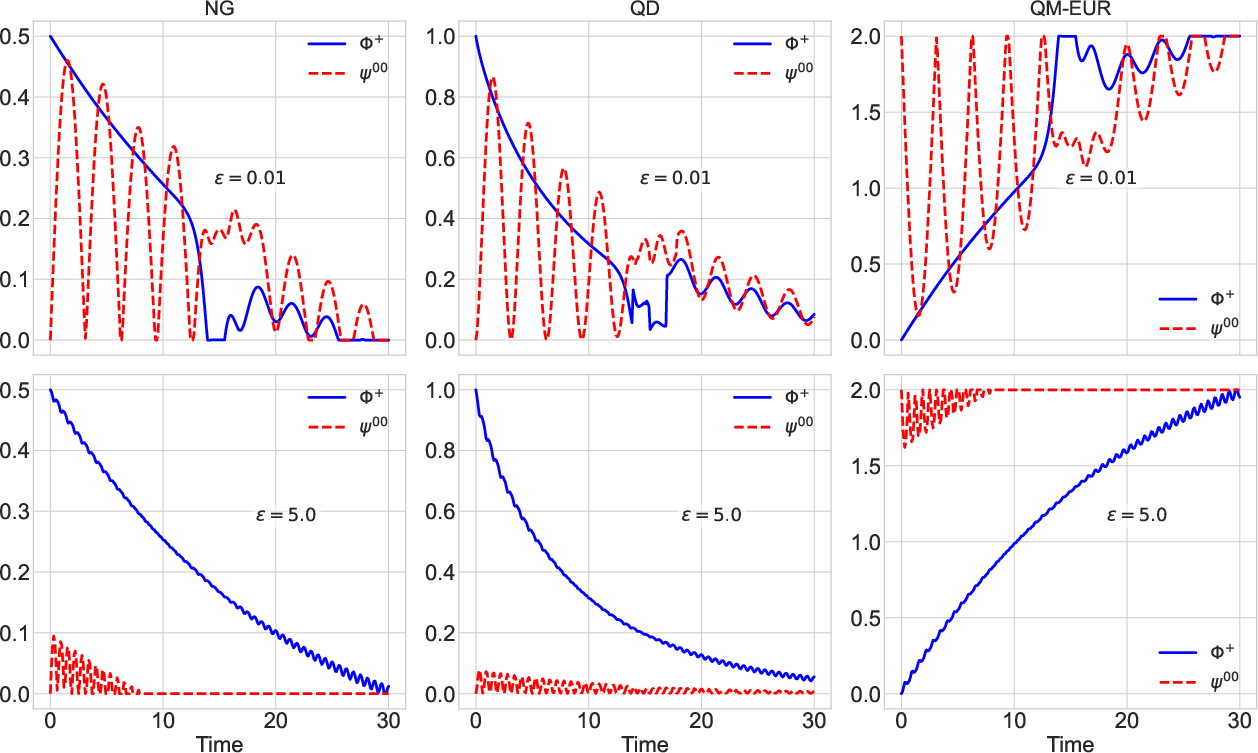
Figure 1: Time evolution of NG, QD, and QM-EUR in weak versus strong energy splitting regimes, contrasting Bell and separable initial states.
Sensitivity to Decoherence Channels
The interplay between amplitude damping and pure dephasing dictates the lifetime and revival patterns of quantum correlations. Increased damping (γamp) accelerates the vanishing of NG; QD evidences greater resilience, often persisting after entanglement extinction. QM-EUR serves as a sensitive probe to residual coherence and quantum memory; it approaches maximal uncertainty rapidly when both NG and QD are suppressed by strong decoherence.

Figure 3: Impact of amplitude damping rate on the temporal profiles of NG, QD, and QM-EUR for different initial states.
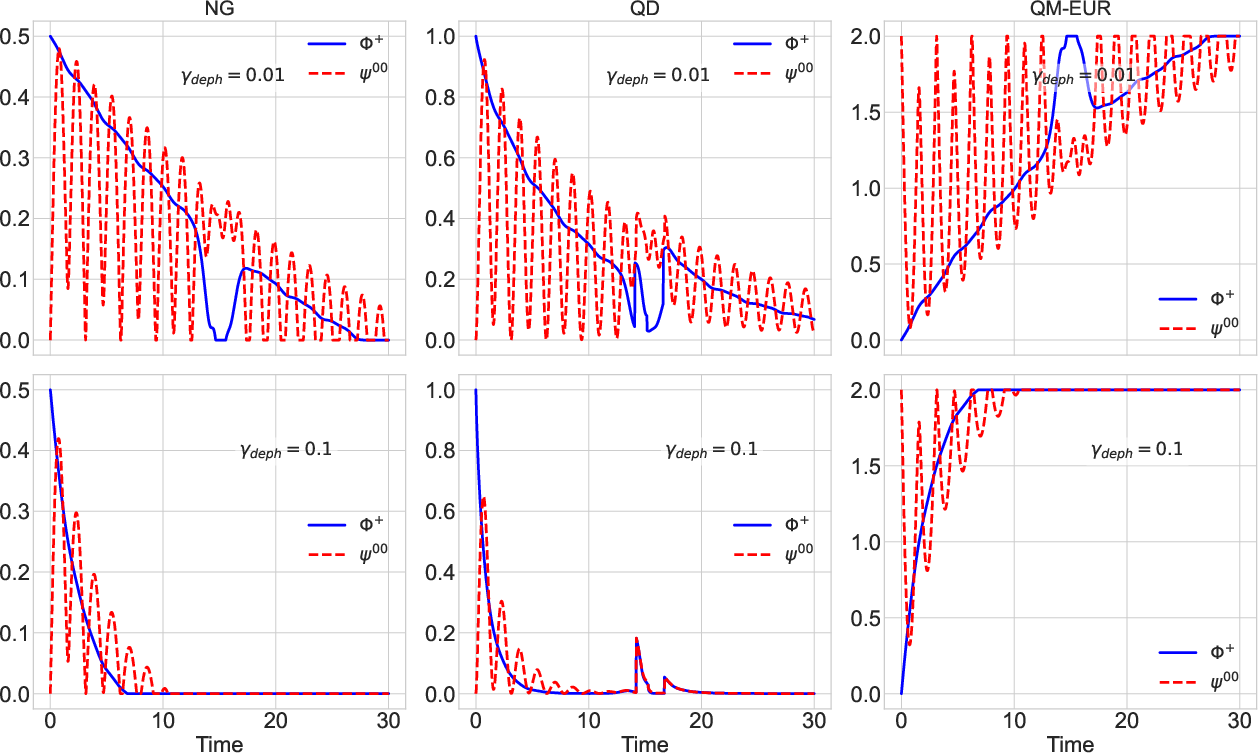
Figure 5: Effect of pure dephasing rate on the decay of quantum correlations and uncertainty measures.
Pulse Characterization: Amplitude and Width
Pulse amplitude (Apulse) and temporal width (βpulse) modulate the generation and dissipation of correlations. Large amplitude, narrow pulses can efficiently induce substantial, albeit transient, entanglement and discord from uncorrelated states, while also rapidly destroying pre-existing Bell-type entanglement.
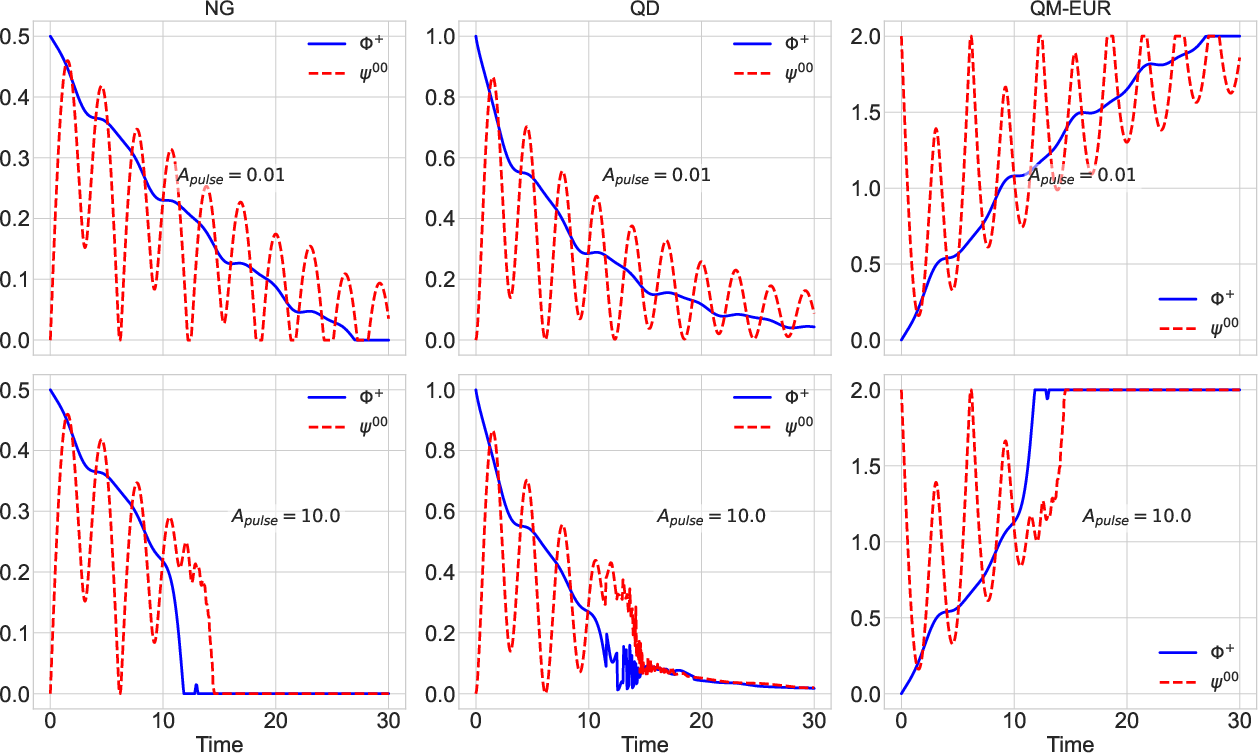
Figure 2: Comparison between weak and strong pulse amplitudes on correlation dynamics for both initial states.
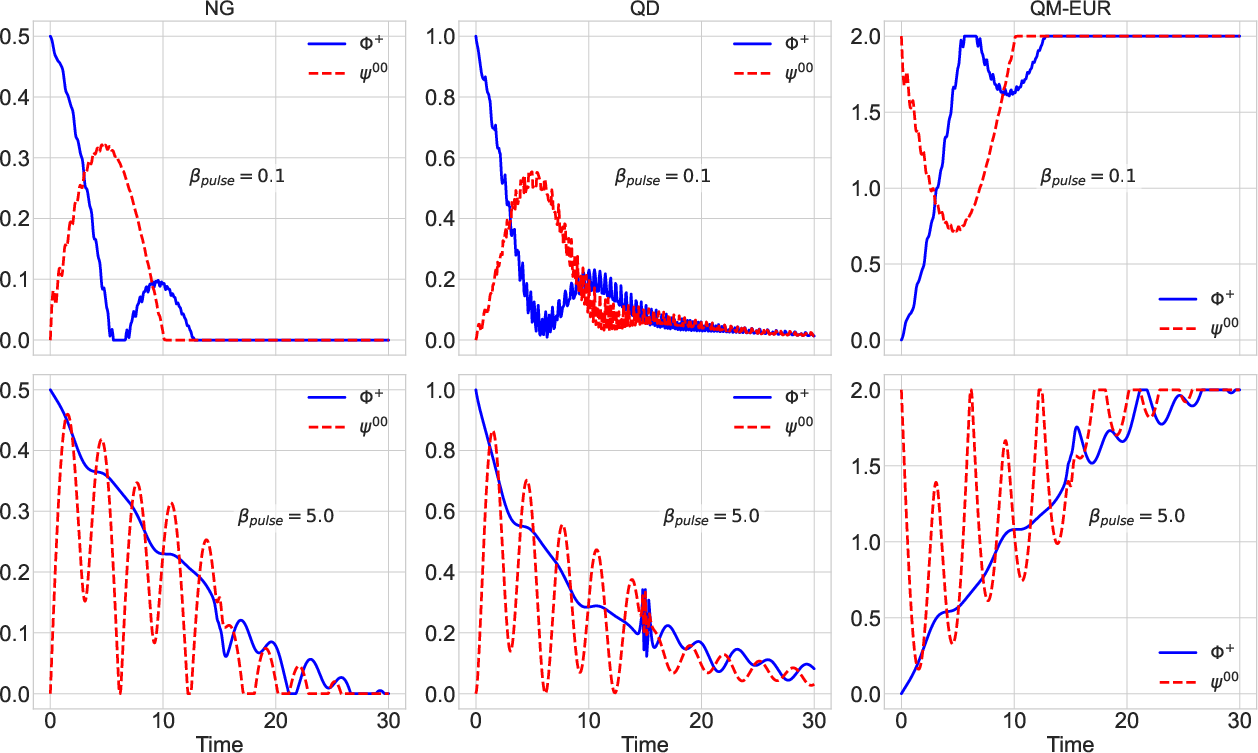
Figure 4: Adaptation of correlation robustness to pulse width: broad, slow versus narrow, rapid pulses.
Pulse-Induced Dephasing and Environmental Modulation
Collective dephasing triggered by the pulse introduces an additional decoherence pathway. In the weak dephasing regime, entanglement and discord undergo extended oscillatory evolution, whereas strong pulse-induced dephasing rapidly destroys most quantum correlations. Residual non-zero QM-EUR indicates persistent quantum memory effects even beyond complete suppression of NG and QD.
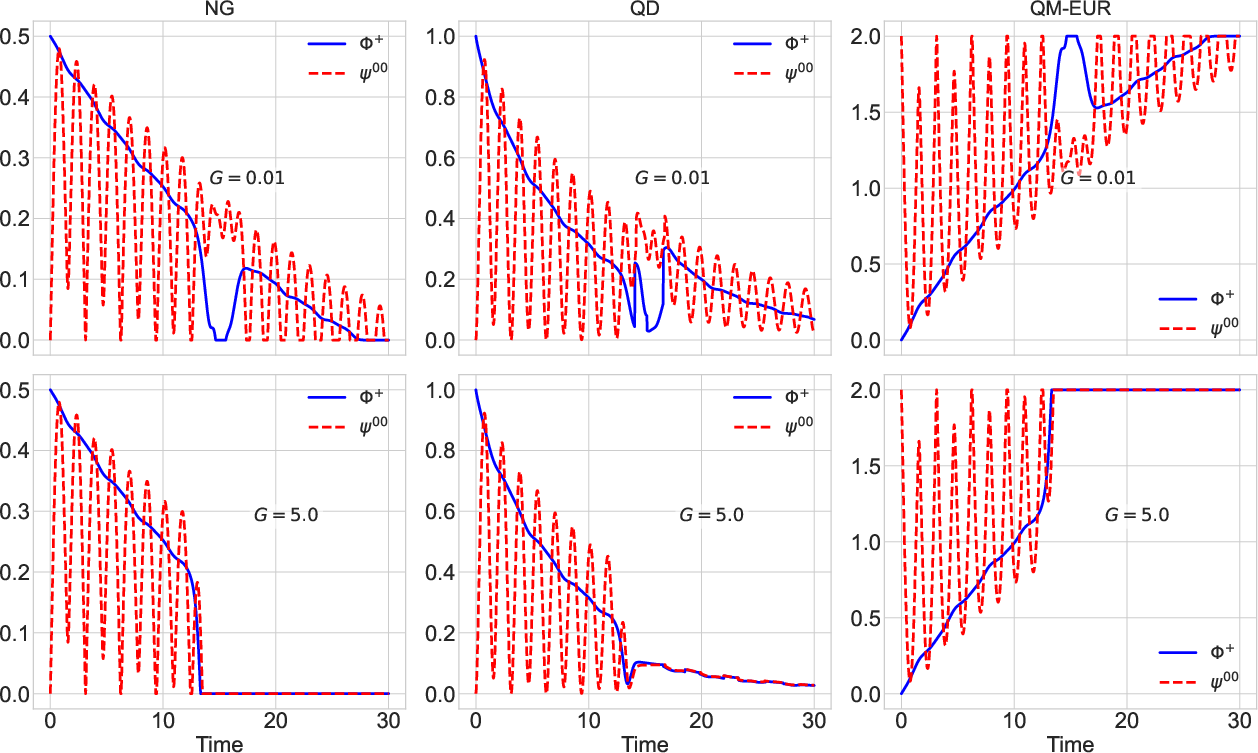
Figure 6: Influence of pulse-induced dephasing strength on the persistence and regeneration of quantum correlations.
Hierarchy of Correlation Robustness
The simulations highlight a clear hierarchy: NG is highly sensitive and rapidly suppressed; QD is more robust, often persisting after NG vanishes, demonstrating quantum correlations beyond entanglement; QM-EUR captures more subtle, global quantum features and remains nonzero when both NG and QD are negligible. This hierarchy is accentuated by the choice of initial state, pulse parameters, and decoherence regime.
Implications and Prospective Directions
This paper provides actionable insight for the design of quantum protocols that require engineered robustness to environmental noise, such as quantum information storage, quantum error correction, and high-fidelity gate implementation. The findings underscore the necessity of tailoring pulse sequences not only to the intended quantum operation but also to the environmental and system-specific decoherence landscape.
The observation that different correlations exhibit distinct robustness demands a nuanced approach to quantum resource management: protocols reliant on nonclassical correlations could leverage regimes in which QD is preserved while entanglement is not. The results suggest promising directions for pulse shape optimization, feedback-assisted adaptive control, and the integration of these methods into machine-learning-driven quantum control platforms.
Theoretical extensions could target the role of thermal noise, step beyond bipartite systems to multipartite or higher-dimensional architectures, and explore the interplay with structured (non-Markovian) reservoirs. Experimental validation could proceed in controlled circuit QED or ion-trap architectures.
Conclusion
The dynamics of quantum correlations in a driven, dissipative two-qubit system reveal a rich structure dictated by system initialization, intrinsic interaction strengths, external pulse shaping, and the nature of environmental noise. The work delineates the precise conditions under which entanglement is stabilized, correlations are dynamically generated, or all quantum resources rapidly vanish, and demonstrates the potential to exploit pulse parameters to engineer resilient quantum states. The established quantitative and qualitative hierarchy among correlation measures and the elucidation of control strategies provide a path toward robust, scalable quantum technologies, offering valuable design principles for emergent quantum hardware and protocols.





